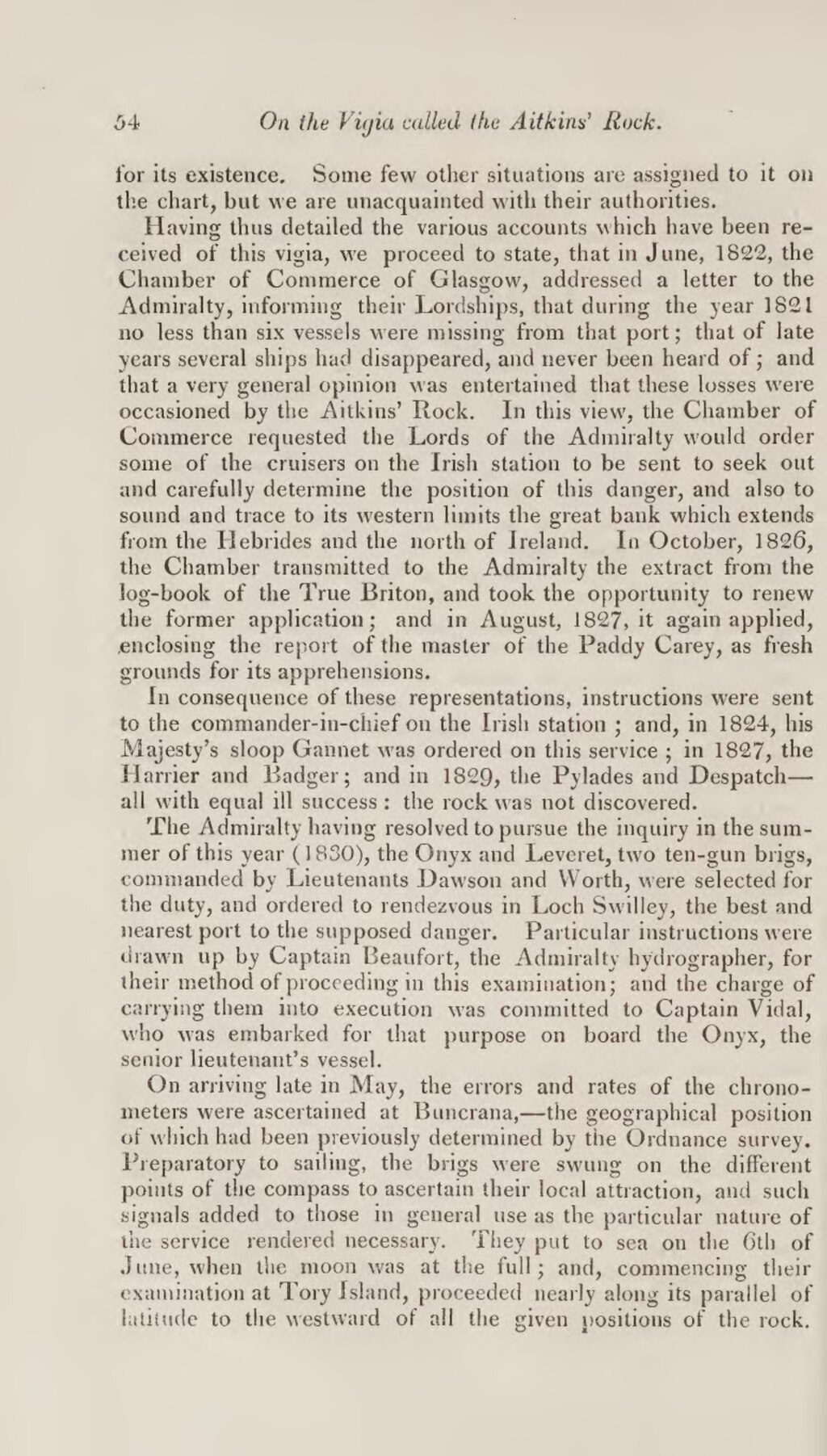for its existence. Some few other situations are assigned to it on the chart, but we are unacquainted with their authorities.
Having thus detailed the various accounts which have been received of this vigia, we proceed to state, that in June, 1822, the Chamber of Commerce of Glasgow, addressed a letter to the Admiralty, informing their Lordships, that during the year 1821 no less than six vessels were missing from that port; that of late years several ships had disappeared, and never been heard of; and that a very general opinion was entertained that these losses were occasioned by the Aitkins' Rock. In this view, the Chamber of Commerce requested the Lords of the Admiralty would order some of the cruisers on the Irish station to be sent to seek out and carefully determine the position of this danger, and also to sound and trace to its western limits the great bank which extends from the Hebrides and the north of Ireland. In October, 1826, the Chamber transmitted to the Admiralty the extract from the log-book of the True Briton, and took the opportunity to renew the former application; and in August, 1827, it again applied, enclosing the report of the master of the Paddy Carey, as fresh grounds for its apprehensions.
In consequence of these representations, instructions were sent to the commander-in-chief on the Irish station; and, in 1824, his Majesty's sloop Gannet was ordered on this service; in 1827, the Harrier and Badger; and in 1829, the Pylades and Despatch—all with equal ill success: the rock was not discovered.
The Admiralty having resolved to pursue the inquiry in the summer of this year (1830), the Onyx and Leveret, two ten-gun brigs, commanded by Lieutenants Dawson and Worth, were selected for the duty, and ordered to rendezvous in Loch Swilley, the best and nearest port to the supposed danger. Particular instructions were drawn up by Captain Beaufort, the Admiralty hydrographer, for their method of proceeding in this examination; and the charge of carrying them into execution was committed to Captain Vidal, who was embarked for that purpose on board the Onyx, the senior lieutenant's vessel.
On arriving late in May, the errors and rates of the chronometers were ascertained at Buncrana,—the geographical position of which had been previously determined by the Ordnance survey. Preparatory to sailing, the brigs were swung on the different points of the compass to ascertain their local attraction, and such signals added to those in general use as the particular nature of the service rendered necessary. They put to sea on the 6th of June, when the moon was at the full; and, commencing their examination at Tory Island, proceeded nearly along its parallel of latitude to the westward of all the given positions of the rock.
